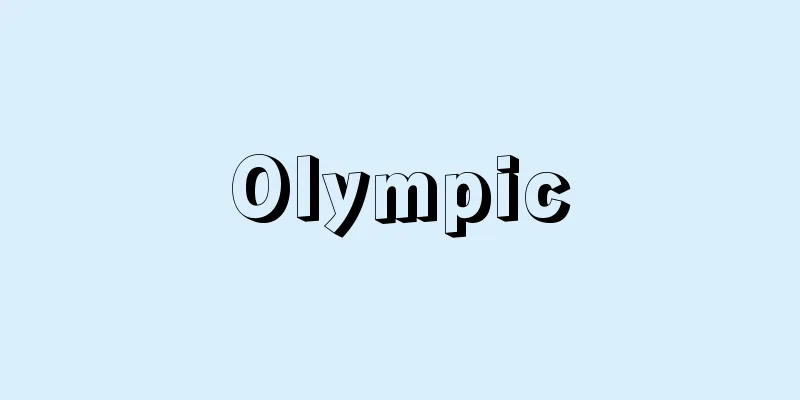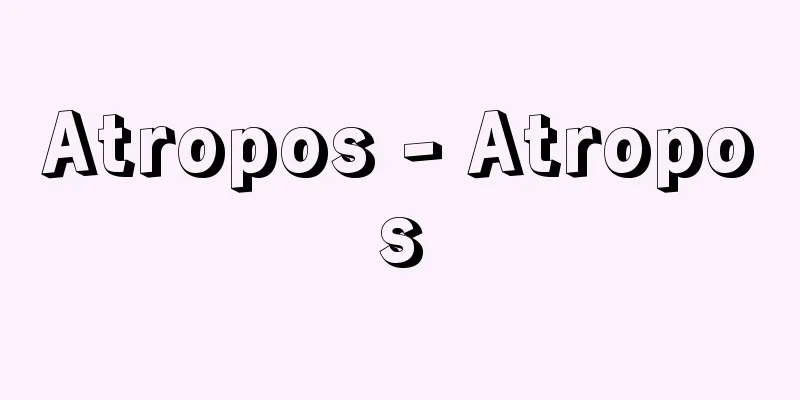Cold War
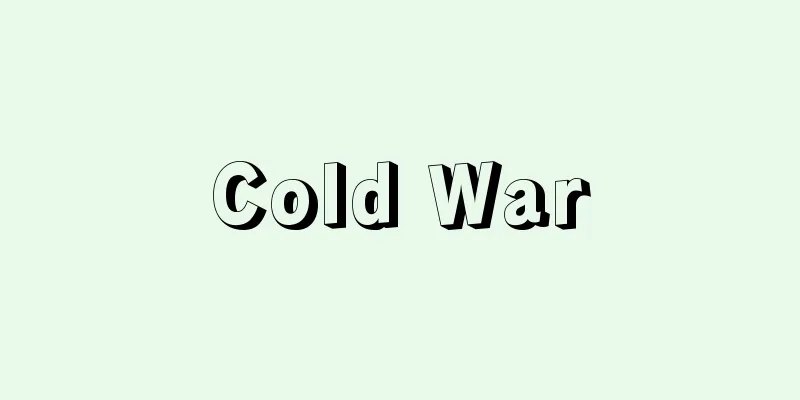
|
After World War II, the two great powers with opposing ideologies, the United States and the Soviet Union, faced off on a global scale, backed by nuclear power, in what was an international political phenomenon that sometimes escalated into a hot war. The term "Cold War" itself was first used in a speech by the American politician Bernard Mannes Baruch (1870-1965), and was later used as the title of a serial article by another leading American critic, Lippmann, and has since become a commonly used term. It is also called the "Cold War." [Shunichi Fujimura] originMutual distrust began to grow between the Allied powers of the United States and Britain on the one hand and the Soviet Union on the other hand towards the end of World War II, and after Germany's surrender in 1945, conflict became apparent over how to deal with the postwar situation in Europe. Harbinger of the Cold War from the West included British Prime Minister Churchill's "Iron Curtain Speech" in 1946 and US Secretary of State Byrnes' "Stuttgart Speech," but the full-scale declaration of the start of the Cold War was probably the announcement of the "Truman Doctrine" and the Marshall Plan in 1947. In particular, the "Truman Doctrine," which declared aid to Greece and Turkey in the midst of their civil wars, made the conflict between the United States and the Soviet Union clear. In Asia, the areas of tension expanded with the creation of the divided Korean Peninsula into North and South Korea (1948) and the founding of the People's Republic of China after the Chinese Civil War (1949). [Shunichi Fujimura] Primary tensionThe 1948 Czechoslovakian coup d'état, known as the February Revolution, which saw the Communist Party seize power, sent shock waves through Western Europe. The greatest tension during this period was the 1948-1949 blockade of Berlin by the Soviet Union, which protested the currency reforms of the United States, Britain, and France, three of the four countries that had occupied Germany. The United States immediately responded with a large-scale airlift operation, bringing the situation to the brink of war. The United States then established the North Atlantic Treaty Organization (NATO) in 1949 with 12 Western countries, including Britain and France, to solidify its position. That same year, Germany split into East and West, each of which was incorporated into the two major camps of the United States and the Soviet Union. Meanwhile, the Soviet Union also established the Warsaw Pact with seven Eastern European countries in 1955, dividing Europe in two. During this time, the Korean War broke out in Asia on the Korean Peninsula, which was divided into North and South Korea (1950-1953). North Korea, supported by China, and the United Nations forces, mainly led by the U.S. military, fought a fierce battle, resulting in hundreds of thousands of war deaths on both sides (excluding civilians). [Shunichi Fujimura] First relaxationAround this time, America's nuclear monopoly collapsed when the Soviet Union declared in 1949 that it possessed the atomic bomb, and instead the Soviet Union gained the upper hand in the development of the hydrogen bomb. Furthermore, with the death of Soviet dictator Stalin in 1953, the armistice agreement of the Korean War, and the end of the Indochina War in 1954, the US side began to show signs of accepting easing of tensions. In 1955, the first summit meeting in a long time between the four great powers of the US, Britain, France and the Soviet Union was held, and was welcomed by the world as the "Geneva Thaw." Khrushchev, the Soviet leader during this period, appealed for peaceful coexistence, taking advantage of the superiority of nuclear missiles over the US, but he also expanded the stage of Soviet diplomacy to the Middle East, Africa, and Central America. [Shunichi Fujimura] Secondary tensionWhen Kennedy became president in 1961, the United States took a tough stance against the Soviet Union. Khrushchev, however, refused to back down and built the Berlin Wall, then conducted a series of hydrogen bomb tests of several tens of megatons, demonstrating the Soviet Union's superiority. In addition, in 1962, he established a missile base in Cuba, shocking the American people. Kennedy responded by blockading Cuban waters to prevent the missiles from being brought in (the Cuban Missile Crisis), bringing the United States and the Soviet Union to the brink of nuclear war, but the situation was averted by the Soviet Union's concessions. [Shunichi Fujimura] Second relaxationAfter the Cuban Missile Crisis, the United States and the Soviet Union came closer to each other. This was because the conflict between China and the Soviet Union intensified in the Eastern Bloc, while in the Western Bloc, France's De Gaulle began to pursue his own path. In addition, the United States fully intervened in the Vietnam War (1961-1973) during the Kennedy era, and gave up on the resistance of the National Liberation Front, forcing the United States and the Soviet Union into a Cold War ceasefire. Brandt, who became Chancellor of West Germany in 1969, implemented the "Ostpolitik" and brought about another relaxation of tensions, such as the Soviet-West German Non-Use of Forces Treaty with the Soviet Union in 1970, the Border Recognition Treaty with Poland, and the establishment of the Basic Treaty between East and West Germany in 1972. In response to this, the Strategic Arms Limitation Talks (SALT) were also agreed upon between Nixon and Brezhnev in 1972 between the US and the Soviet Union. The US and China, which had been in conflict for a long time, also restored diplomatic relations in 1979, following Nixon's visit to China in the same year. The relaxation of tensions in Europe also reached a climax in 1975 when 35 countries from East and West gathered in Helsinki to form the Conference on Security and Cooperation in Europe (CSCE, since 1995 the Organization for Security and Cooperation in Europe, or OSCE). [Shunichi Fujimura] Final tension and conclusionWhen Reagan became president of the United States in 1981, he strongly criticized the Soviet Union for sending troops to Afghanistan, and relations between the United States and the Soviet Union once again became strained. In particular, the decision by the United States to deploy intermediate-range nuclear forces (INF) provoked the Soviet Union, and voices of opposition grew in Western Europe, where the war would take place. However, after the death of the Soviet strongman Brezhnev (1982), Gorbachev, who became the leader in 1985, promoted a course of perestroika (reform) domestically and withdrew Soviet troops from Afghanistan (1988). In response, the United States also softened its stance, signing the Intermediate-Range Nuclear Forces Treaty in 1987. Furthermore, in 1989, Bush, who became the US president, promoted negotiations on the Conventional Forces in Europe Treaty (CFE Treaty) to regulate conventional forces and Confidence and Security Building Measures (CSBM) to avoid crises, and the movement towards disarmament progressed rapidly. In December of the same year, at the US-Soviet summit in Malta, G. H. W. Bush and Gorbachev announced a dramatic joint declaration of the "end of the Cold War." Following the unification of Germany in 1990 and the collapse of the Soviet Union in 1991, the Cold War, which had lasted for 45 years since the end of World War II, came to an end. [Shunichi Fujimura] "Iwanami Lectures: Modern Times 6: The Cold War - Political Considerations" (1963, Iwanami Shoten)" ▽ "Modern International Political History - The Cold War and Its Origins, Vols. 1-4, by D.F. Fleming, translated by Obata Misao (1966-1970, Iwanami Shoten)" ▽ "The Cold War as History, by L.J. Halley, translated by Ota Hiroshi (1970, Simul Publishing)" ▽ "The Korean War, by Kim Hak-jun, translated by Kamata Mitsuto (1989, Simul Publishing)" ▽ "Post-Cold War, by Funabashi Yoichi (1991, Iwanami Shoten)" ▽ "1961: Kennedy's War, by Matsuoka Kan (1999, Asahi Shimbun)" ▽ "World History 16, Modern Times - Crossroads for Humanity, edited by Matsumoto Shigeharu (Chuko Bunko)" [References] | | | | | | | | | | | | | | | Curtain| | | | | | | | | | | | | | [Chronology] |Source: Shogakukan Encyclopedia Nipponica About Encyclopedia Nipponica Information | Legend |
|
第二次世界大戦後、相対立するイデオロギーのアメリカ合衆国、ソビエト連邦の二大国が、核戦力を背景に世界的規模で対決し、ときには熱い戦争Hot Warにまで発展した国際政治上の現象。「冷戦」ということば自体は、アメリカの政治家バルークBernard Mannes Baruch(1870―1965)が演説で用いたものを、同じくアメリカの代表的な評論家リップマンが連載記事の題にして以来、常用語として定着した。「冷たい戦争」ともよばれる。 [藤村瞬一] 起源第二次世界大戦末期から連合国のアメリカ、イギリスとソ連との間に相互不信が芽生え、1945年のドイツ降伏後、ヨーロッパの戦後処理をめぐって対立が顕在化した。西側からの冷戦の先触れとしては、1946年のイギリス首相チャーチルの「鉄のカーテン演説」、アメリカ国務長官バーンズの「シュトゥットガルト演説」などがあるが、本格的な冷戦の開始宣言は、1947年の「トルーマン・ドクトリン」「マーシャル・プラン」の発表であろう。とくに内戦下のギリシア、トルコへの援助を宣言した「トルーマン・ドクトリン」は米ソの対立を鮮明にした。 またアジアでも、朝鮮半島の南北分裂国家の誕生(1948)、国共内戦後の中華人民共和国の成立(1949)など、緊張の舞台は拡大した。 [藤村瞬一] 第一次緊張1948年のチェコスロバキアのクーデター「チェコ二月革命」による共産党の政権奪取は、西ヨーロッパ諸国に衝撃を与えた。また、この時期最大の緊張は、ドイツ占領4国のうち、アメリカ、イギリス、フランスの通貨改革に抗議したソ連による、1948~1949年のベルリン封鎖である。これに対しアメリカは、ただちに大規模な空輸作戦で対抗し、一触即発の危機を迎えた。ついでアメリカは、イギリス、フランスなど西側諸国12か国と1949年に北大西洋条約機構(NATO、ナトー)を成立させ体制を固めた。この年ドイツは東西に分裂、それぞれ米ソ二大陣営に組み込まれた。一方、ソ連側も1955年に東欧7か国とワルシャワ条約機構を設立し、ヨーロッパは二分された。 この間、アジアでは南北に分断された朝鮮半島で朝鮮戦争が勃発(ぼっぱつ)した(1950~1953)。中国に支援された北朝鮮と、米軍を中心とする国連軍が激しい戦火を交え、双方に数十万の戦死者(一般市民を除く)を出した。 [藤村瞬一] 第一次緩和このころアメリカの核の独占は1949年のソ連の原爆保有宣言により崩れ、それどころか水素爆弾の開発ではソ連が優位にたった。また、1953年ソ連の独裁者スターリンの死去、朝鮮戦争の休戦協定、1954年インドシナ戦争の終結を迎えて、アメリカ側に緊張緩和を受け入れる姿勢がみえてきた。1955年、久しぶりの米英仏ソ四大国首脳会談が開かれ、世界から「ジュネーブの雪解け」と歓迎された。この時期のソ連の指導者フルシチョフは、核ミサイルの対米優位を背景に平和共存を訴えつつも、ソ連外交の舞台を中東、アフリカ、中部アメリカに拡大していった。 [藤村瞬一] 第二次緊張1961年、大統領にケネディが就任すると、アメリカはソ連に対し厳しい姿勢を示した。これに対しフルシチョフも譲らず「ベルリンの壁」を構築、続いて数十メガトン級の水爆実験を連続して行い、ソ連優位を示した。加えて1962年にキューバにミサイル基地を設けアメリカ国民を驚かせた。対するケネディは、さらにミサイルが搬入されるのを阻止するためキューバ海域を封鎖し(キューバ危機)、米ソはあわや核戦争の寸前まで至ったが、ソ連の譲歩でことなきを得た。 [藤村瞬一] 第二次緩和キューバ危機が過ぎると、一転して米ソは歩み寄った。それは東陣営では中ソの対立が激化し、西陣営ではフランスのドゴールが独自路線をとり始めたからである。加えてアメリカは、ケネディ時代に本格的に介入したベトナム戦争(1961~1973)で民族解放戦線の抵抗に手をやき、米ソは冷戦の休戦を強いられたのである。 1969年に西ドイツ首相に就任したブラントは「東方政策」を行い、1970年ソ連とソビエト・西ドイツ武力不行使条約、ポーランドと国境承認条約を結び、1972年東西両ドイツ基本条約を成立させるなど、もう一つの緊張緩和をもたらした。これを受け、1972年米ソ間でもニクソン、ブレジネフの間で戦略兵器制限交渉(SALT、ソルト)の合意が成立した。長い間対立していた米中両国も、同年のニクソンの訪中を機に、1979年の国交回復へとつながった。また、ヨーロッパの緊張緩和は、1975年ヘルシンキに東西35か国が集まったヨーロッパ安全保障協力会議(CSCE。1995年よりヨーロッパ安全保障協力機構=OSCE)で最高潮に達した。 [藤村瞬一] 最後の緊張と終結1981年にレーガンがアメリカ大統領に就任すると、アフガニスタンに派兵していたソ連を激しく非難、ふたたび米ソ間は険悪となった。とくにアメリカによる中距離核戦力(INF)の配備決定はソ連を刺激し、戦場となる西ヨーロッパからも反対の声が高まった。 しかし、ソ連の実力者ブレジネフの死去(1982)後、1985年に指導者となったゴルバチョフは、国内にペレストロイカ(改革)路線を進め、対外的にはアフガニスタンからソ連軍を撤退(1988)させた。これに対しアメリカ側も態度を軟化させ、1987年中距離核戦力全廃条約に調印。さらに1989年、アメリカ大統領に就任したブッシュは、通常戦力の規制のためのヨーロッパ通常戦力条約(CFE条約)、危機回避のための信頼・安全醸成措置Confidence and Security Building Measures(CSBM)の交渉を推進するなど、軍縮の動きは急速に進展していった。同年12月マルタ島での米ソ会談でG・H・W・ブッシュ、ゴルバチョフ両首脳は劇的な「冷戦終結」の共同宣言を発表、1990年ドイツ統一、1991年ソ連崩壊を経て、第二次世界大戦後45年続いた冷戦は終結した。 [藤村瞬一] 『『岩波講座 現代6 冷戦――政治的考察』(1963・岩波書店)』▽『D・F・フレミング著、小幡操訳『現代国際政治史――冷たい戦いとその起源』1~4巻(1966~1970・岩波書店)』▽『L・J・ハレー著、太田博訳『歴史としての冷戦』(1970・サイマル出版会)』▽『金学俊著、鎌田光登訳『朝鮮戦争』(1989・サイマル出版会)』▽『船橋洋一著『冷戦後』(1991・岩波書店)』▽『松岡完著『1961 ケネディの戦争』(1999・朝日新聞社)』▽『松本重治編『世界の歴史16 現代――人類の岐路』(中公文庫)』 [参照項目] | | | | | | | | | | | | | | | | | | | | | | | | | | | | | [年表] |出典 小学館 日本大百科全書(ニッポニカ)日本大百科全書(ニッポニカ)について 情報 | 凡例 |
Recommend
Hybris (English spelling)
The Greek word for arrogance means pride. Since Ho...
Hokuhansan - Hokukansan
The main peak of the Bugak mountain range, locate...
Kokura Domain
A clan whose head office was located in Kokura, K...
Yamato Dance - Yamato Dance
Also written as Yamatomai or Wamai. A uniquely Jap...
balloon frame construction
…Singles, made by splitting cedar or oak into thi...
Balto-Slavic Languages Problem - Balto-Slavic Languages Problem
The two branches of the Indo-European language fam...
Character display - Mojihyojisouchi (English spelling) character display
A type of computer output device. Also known as a ...
Half-imported - Hanfuyu
In the Heian and Kamakura periods, this refers to ...
Golden Ring - Golden Ring
Zolotoye kol'tso ( Zolotoye kol'tso ) is a...
dog leg
...A hypothetical satellite's speed on the Ea...
Annan Country
…The name Annam comes from the name of this prote...
Evans, Edmund
…British picture book author. His father was a wo...
Mucopolysaccharide - Mucopolysaccharide (English spelling)
A general term for polysaccharides containing ami...
Khidash (English spelling)
...Arabic sources refer to it as Khurramiya or Kh...
Thermal pollution
Environmental damage caused by high-temperature wa...
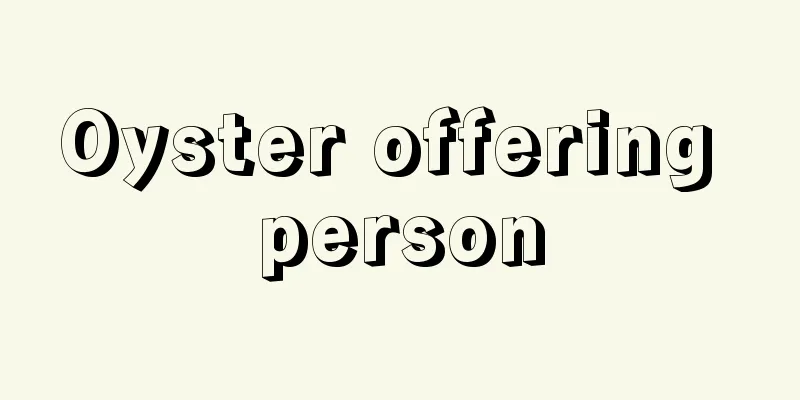
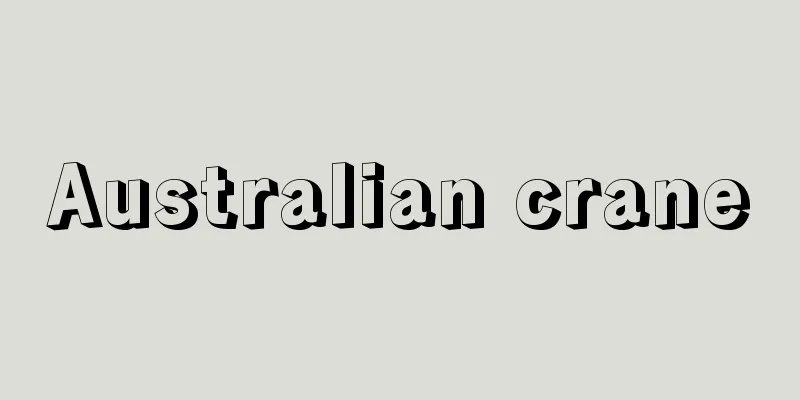


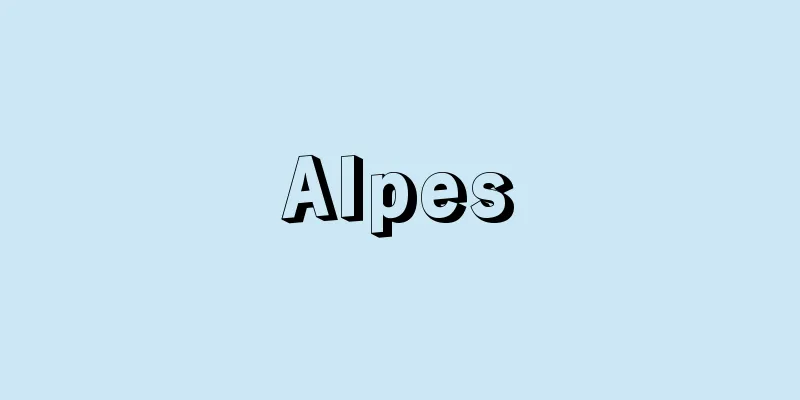
![Nonoichi [town] - Nonoichi](/upload/images/67cc7b7761539.webp)
